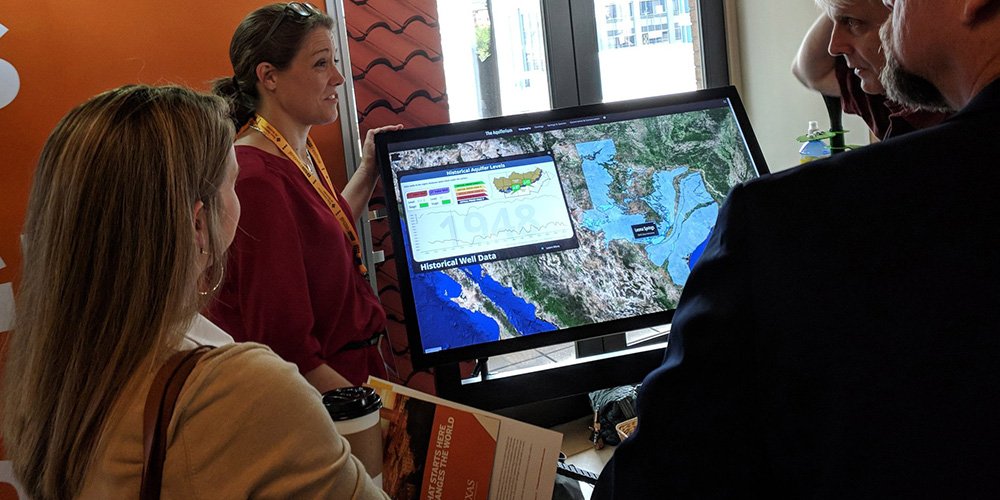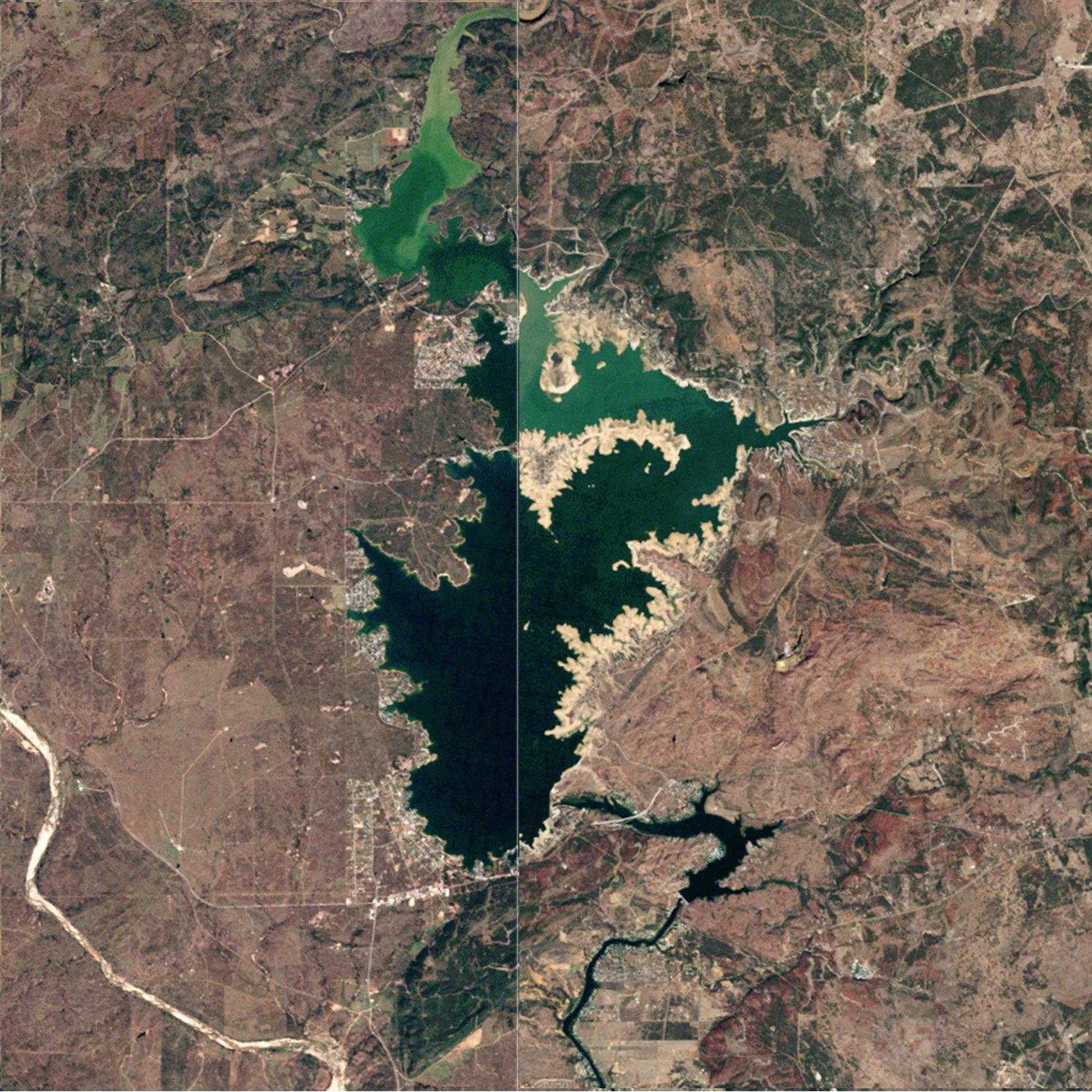Powering Discoveries
Faith Singer-Villalobos
Related Links
Texas in 2050
TACC’s DataX platform underlies UT Austin’s Planet Texas 2050 grand challenges

Concerns weigh heavily on the minds of people around the world about challenges like climate change, population growth, waste, and pollution. And Texas communities share these concerns.
Hurricane Harvey is a recent reminder of the threats posed by an extreme weather event. In a very short amount of time, communities were heavily damaged in and around Houston, the nation’s fourth largest city. Years later, people there are still recovering and rebuilding.
UT Austin’s Planet Texas 2050, launched in 2018, draws upon the experience of a wide range of experts throughout Texas to combine the knowledge of local communities with the latest science and computing tools to help Texans create a safe and secure path for their future.

What will the future of Texas look like in terms of its environment, economy, and demographics in 2050?
More people than ever are moving to Texas. From July 2017 to July 2018, Texas added 380,000 residents — the most of any U.S. state. That’s more than 1,000 new people a day. Texas’ overall population — 29 million in 2019 — is projected to double by 2050.
As Texas’ population grows, the state’s resources will be under increasing pressure from urbanization. And the challenge is immense when coupled with changes in climate and the increasing vulnerability to natural disasters.
“In order for us to help society meet its future challenges, we need to provide tools that will allow citizens, industry, and government to understand the consequences of their choices in a changing world,” says UT Austin Vice President for Research Dan Jaffe. “The problem is that the vast amount of data we have and continue to collect was not assembled with the idea that we would use it to model future choices.”
The Computational Underpinning
Suzanne Pierce, a research scientist at TACC who builds intelligent systems to manage water and earth resources, believes that the best solutions often come from communities.
“We all want safety, and we all want resilient, secure societies,” Pierce says. “We all want to know that we have electricity, food, energy, and water when we wake up in the morning.”
Pierce leads DataX, the technology platform that supports all of the data, integration, projects, applications, and actions that enable the research for Planet Texas 2050.
Pierce has been engaged with the Planet Texas 2050 team since its inception. She sees the project through the lens of knowledge-centered computing.
"In order for us to help society meet its future challenges, we need to provide tools that will allow citizens, industry, and government to understand the consequences of their choices in a changing world."
“It’s about meaning and information coming together, creating takeaways and knowledge that can inform people,” Pierce said. “DataX is a foundational component of a broader cyber-enabled ecosystem that allows the community of users, from researchers to decision makers to stakeholders across the state, to explore ‘what-if’ scenarios and co-design possible solutions. If you do this, you wind up with actionable learning you can actually make use of.”
The Planet Texas 2050 vision may be conceptually easy to understand, but it involves large-scale problems that exceed human capabilities to analyze without the aid of computers. Powering DataX are some of the world’s most advanced computing capabilities and software applications. DataX leverages cutting-edge cyber tools already at TACC to accelerate discoveries and address challenging problems, like determining how much water is available in the state of Texas.
“Water availability is at the center of many concerns because it affects every sector of the economy and influences the quality of life for Texans and every community around the world,” says Michael H. Young, associate director of Environmental Research at UT Austin’s Jackson School of Geosciences. “At the same time, quantifying the actual volumes of accessible water over large regions is an exceedingly complex problem.”
The Planet Texas 2050 team decided to tackle the issue of water availability in the state as a test case for the integrated modeling platform. Efforts to date have created new methods for combining data with models of groundwater, surface water, soil water, and atmospheric conditions. Early results show how researchers can assess and forecast events, such as flooding and drought.

One of the many technical challenges the project faces is sharing data for individuals with different needs. What would a city water planner want to know about the pipelines going into a city? What would a farmer want to know about these same things? They could both be interested in what's happening with the pipeline infrastructure, but they'll want to know for very different reasons. Ecologists may want to look at that same dataset to research water quality and pipe leaks or breaks.
The DataX platform lets individuals access information and see it visually in a way that's easy for non-scientists to understand. Looking ahead, there are a series of advanced services that will enable users to leverage data from the field to the lab to policy relevant research.
Planet Texas 2050 is concerned with bridging deep technical research with implementation and action in the real world to help communities transition from where they are in 2019 to where they will be in 2050.
Pierce says the success of Planet Texas 2050 will come from shared sense-making, a process by which people give meaning to their collective experiences.
“We do that through the conversations we have with one another. The computers and the science are the techniques and tools we can use to explore and find shared understanding. Relationships are built as data-informed conversations occur, and that's how more resilient futures are made,” she says.
Why Texas?
Society is confronting these challenges around the globe. So, why is doing this in Texas different?
“The combination of rapid growth and its position on a climatological boundary make Texas a bellwether, a place where things will happen sooner and where smart decisions can be a guide to citizens, companies, and governments around the world,” Jaffe says. “The unique resource that UT’s TACC offers in the form of superlative computational power and an expert, engaged staff allow TACC to lead the DataX effort that forms a critical part of this effort.”
It's not unusual for the ideas in a research group or a lab at the university to lead to a future technological breakthrough or to future technologies that people rely on in their everyday lives. What happens now will create a ripple effect that will benefit people in Texas and beyond.

